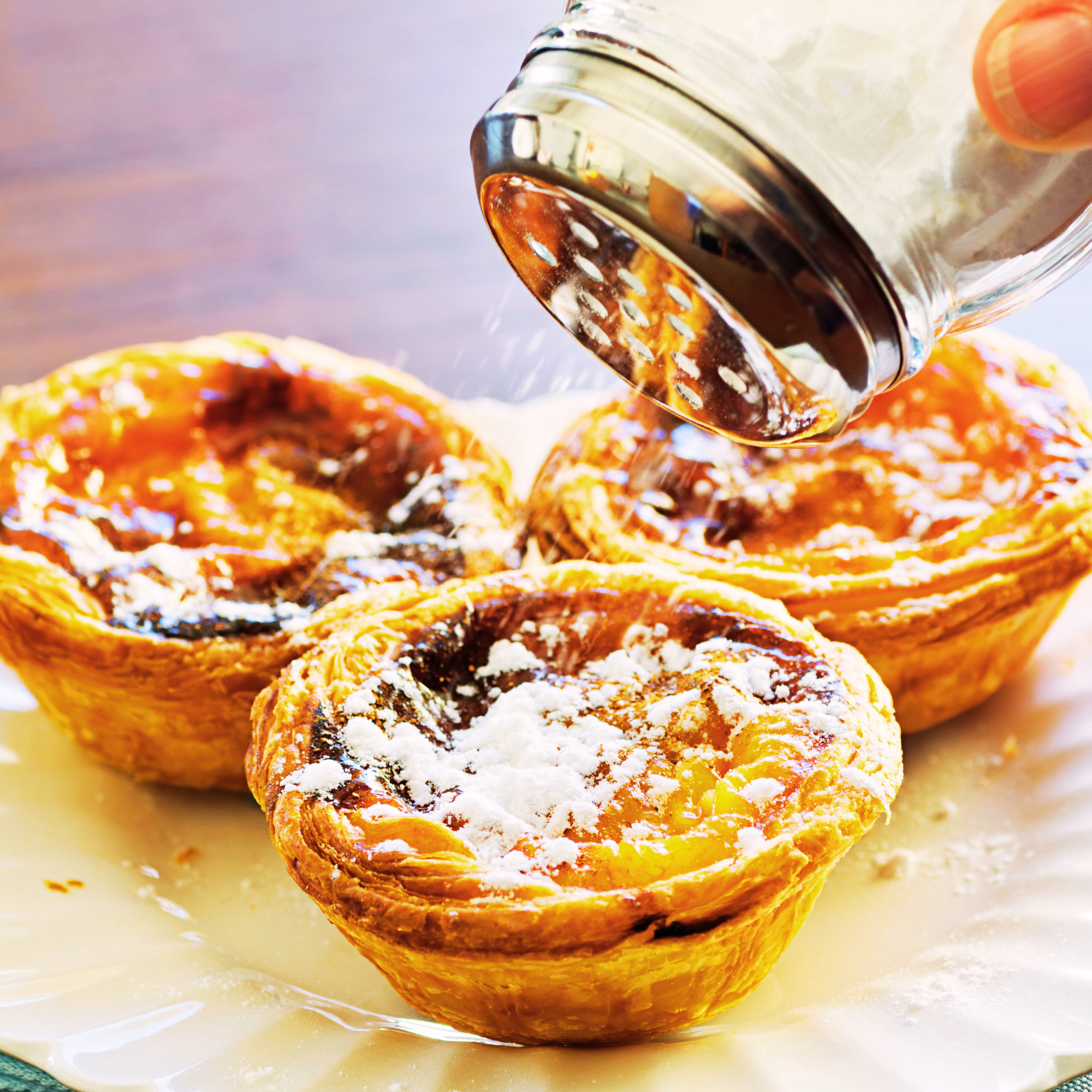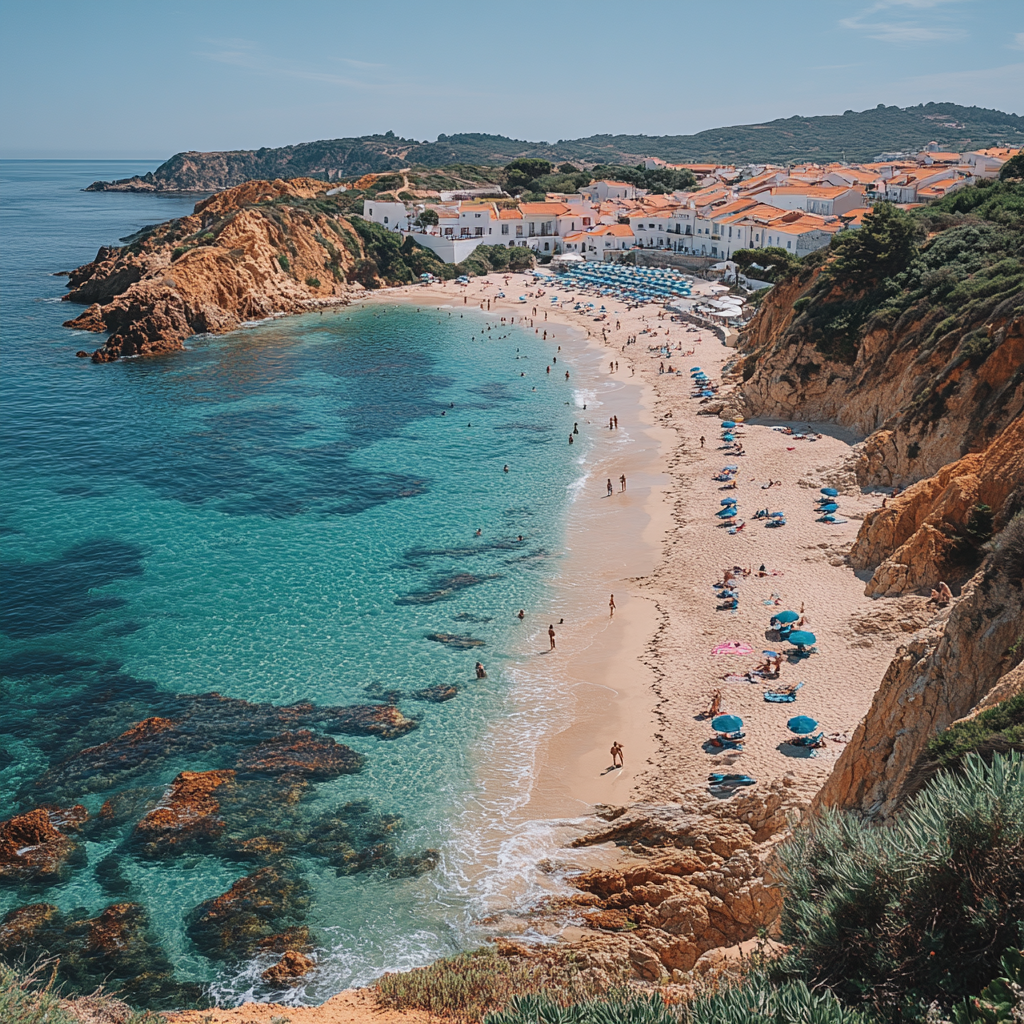Good Morning
Pastel de Nata: Simple Flan or Inimitable Portuguese Delight?🇵🇹 🥘
If you think Pastel de Nata is just a variation of flan, think again! This jewel of Portuguese pastry offers much more than just flavors.
With its crispy puff pastry and smooth, slightly caramelized custard, Pastel de Nata delights the taste buds like no other dessert.
🌍 Discover why this specialty from Portugal has become a globally loved culinary symbol! 😋

1. Origines et histoire du Pastel de Nata
The Pastel de Nata is much more than just a dessert. It has a rich history dating back over 200 years, rooted in Portugal’s monasteries, specifically in the famous Jerónimos Monastery in Belém, a district of Lisbon. At the time, monks used large quantities of egg whites to starch their clothing, leaving a surplus of egg yolks. Rather than wasting them, they began using them to create pastries, including the famous Pastel de Nata.
The first Pastel de Nata was made in the early 19th century. After the dissolution of monasteries in 1834, the monks sold the secret recipe to a sugar refinery, which later opened the Fábrica de Pastéis de Belém in 1837. This iconic establishment, still operating today, is known for its Pastéis de Belém, a specific version of Pastéis de Nata, whose recipe remains a well-kept secret.
This dessert quickly gained popularity beyond Portugal, largely due to Portuguese exploration and migration. Today, variations of Pastel de Nata can be found in countries like Brazil and even Macau, where a slightly different version, known as the Macanese egg tart, has become very popular.
Thus, the Pastel de Nata has become an essential symbol of Portuguese pastry, loved worldwide for its unique combination of crispy puff pastry and creamy custard filling, often caramelized on top and sprinkled with cinnamon. 🥧✨

2. Composition and Differences Between Pastel de Nata and Flan
Although Pastel de Nata and flan share a similar base of eggs, milk, and sugar, their differences in preparation and presentation are significant.
Let's start with flan, a dessert known for its soft and silky texture, often made with a simple base of eggs, milk, and sugar. It is slow-cooked in a bain-marie, giving it a firm and homogeneous consistency, with a smooth surface sometimes covered in caramel.
In contrast, Pastel de Nata, a true symbol of Portugal, stands out with its crispy puff pastry, which serves as a base for a creamy custard made from egg yolks, sugar, milk, and flour. What makes Pastel de Nata unique is its high-temperature baking, which creates a caramelized crust on top while maintaining a light and creamy interior.
Another major difference is the crust. Flan is typically prepared without a crust, whereas Pastel de Nata relies on a puff pastry base, bringing a crispy texture that contrasts with the smoothness of the custard. This combination of textures—the crispiness of the pastry and the creaminess of the filling—makes all the difference and contributes to the unique sensory experience of Pastel de Nata.
Additionally, flan is often served cold, while Pastel de Nata is enjoyed warm, straight out of the oven, which enhances the crunchiness and the contrast with the creamy interior. The addition of cinnamon and sometimes powdered sugar on Pastel de Nata adds an extra layer of flavor that is absent in traditional flan.
In summary, even though both desserts share similar ingredients, Pastel de Nata stands out with its texture, cooking method, and complex flavors, making it a unique pastry and a true treasure of Portuguese gastronomy.

3. Distinct tastes and textures
One of the main differences between Pastel de Nata and flan lies in their distinct flavors and textures, which offer completely different sensory experiences.
Flan, with its smooth and uniform texture, is known for its simple sweetness. It has a subtle flavor, often enhanced by a caramel layer, but remains fairly homogeneous in the mouth. Its water bath preparation gives it a dense and firm texture, while allowing it to retain a freshness that makes it pleasant to enjoy cold.
In contrast, Pastel de Nata, a true emblem of Portugal, offers a richer contrast of flavors and textures. Its crispy puff pastry shell is one of its defining characteristics, adding a crunch that contrasts with the smooth custard filling. The creamy filling, slightly caramelized on top due to high-temperature baking, provides a more complex flavor than flan, with notes of egg and milk, often enhanced by a touch of cinnamon.
Pastel de Nata is typically enjoyed warm, straight out of the oven, which intensifies the crispness of the pastry and the melting smoothness of the custard. This contrast is one of the reasons why it is considered a much more complex dessert than flan. Additionally, Pastel de Nata often has a slightly burnt finish on top, adding a depth of flavor that flan does not have.
In summary, flan offers simple sweetness and a uniform texture, while Pastel de Nata, with its textural contrasts and aromatic complexity, delivers a richer and more varied taste experience, making it a true icon of Portuguese pastry.

4. The Pastel de Nata: An Iconic Portuguese Pastry 🇵🇹🥧
The Pastel de Nata is much more than a simple pastry—it embodies the soul and culinary tradition of Portugal. Having become one of the most iconic symbols of the country, it is cherished not only by locals but also by the millions of tourists who visit Portugal each year. Originally created in Portuguese monasteries in the 19th century, this delicacy has crossed borders and is now renowned worldwide.
The importance of Pastel de Nata in Portuguese culture is undeniable. In Lisbon, the Belém district has become a pilgrimage site for those who wish to taste the famous Pastéis de Belém, made according to the original secret recipe. Every day, the Fábrica de Pastéis de Belém draws crowds of visitors, with tourists from around the world lining up to experience this pastry in its most authentic form.
Beyond Belém, the Pastel de Nata has spread to other countries, thanks to Portuguese explorers and the diaspora who have carried this culinary tradition abroad. Today, it can be found in bakeries worldwide, from Macau to Brazil, as well as in major cities across Europe and the Americas. This pastry has gained global recognition while remaining a key element of Portugal’s gastronomic identity.
In summary, the Pastel de Nata is more than just a dessert—it is an ambassador of Portuguese cuisine. Its unparalleled crispiness and creamy texture have made it an iconic pastry, celebrated for its rich history and flavors, both in Portugal and beyond.
Good Morning
Conclusion
So, is Pastel de Nata just a simple flan? The answer is no. While both desserts share a similar base of ingredients, their differences in texture, preparation, and history are fundamental.
A flan, though a classic dessert worldwide, is relatively simple in composition, with a soft and smooth texture that lacks the contrast offered by Pastel de Nata, which features a crispy puff pastry and a caramelized top.
Pastel de Nata, on the other hand, represents the excellence of Portuguese gastronomy, combining the richness of a creamy custard with the lightness of a flaky crust. It has become a must-try pastry in Portugal, celebrated globally for its complex flavors and unique texture.
This dessert is far more than just a flan—it is a true culinary experience, deserving to be appreciated for what it is: an unparalleled delicacy and a symbol of Portuguese culture.
If you’ve never tasted a Pastel de Nata, now is the perfect time to discover this iconic Portuguese specialty and understand why it continues to delight pastry lovers around the world. 🇵🇹🥧✨
Product
Contact Us


